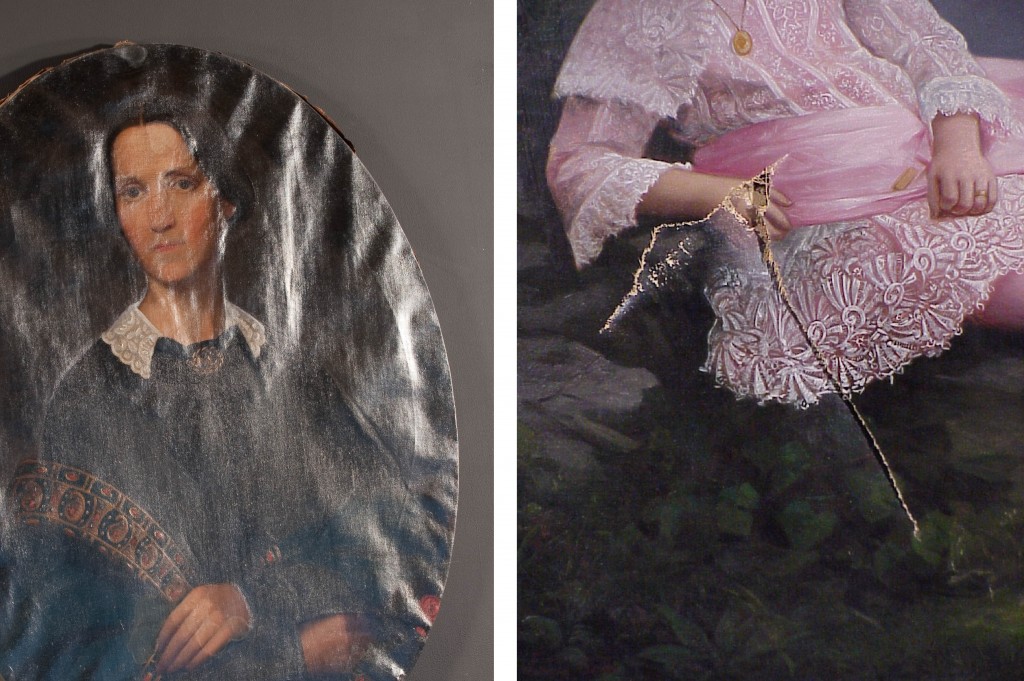Conservation focuses on repairing damage and restoring art, but prevention of damage is also important.
Paintings may require conservation treatment due to
a variety of damages. Structural problems such as
warping or tears in the canvas if left untreated can
further damage the painting. Water damage, insect
damage among other things can lead to paint loss.
Aged and discolored varnish, dirt, and smoke residue
can darken the original colors of a painting and obscure
the artist’s intention. All of these damages can be
remediated to prevent further deterioration.
A during treatment photograph of the partial cleaning
of this painting illustrates how greatly dirt and
discolored varnish can obscure original paint colors.
Structural problems such as warping and tears in the canvas can cause further damage if left untreated.
Often, undoing poor restoration is the first step in
the process. This painting was previously restored,
but the repair didn’t hold and the edges of the torn
area are lifting. The inpainting does not match well
enough for the tear to be invisible. The goal of
good conservation is to stabilize the damage and to
return the painting as closely as possible to it’s
original state
Restoration paints are pigments suspended in a very thin medium. Where paint loss has occurred
the losses must first be filled and textured, then inpainted to match the surrounding area.
Even if the damage seems irreparable, there are always options to restore a painting to its original beauty.




